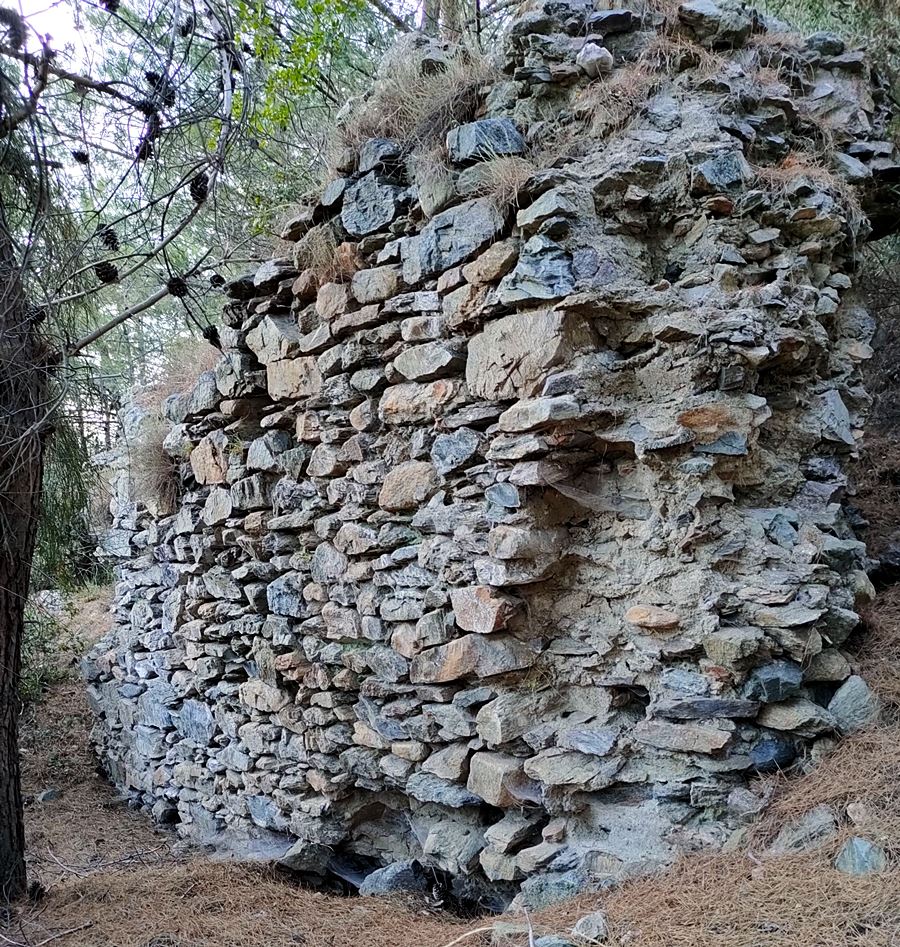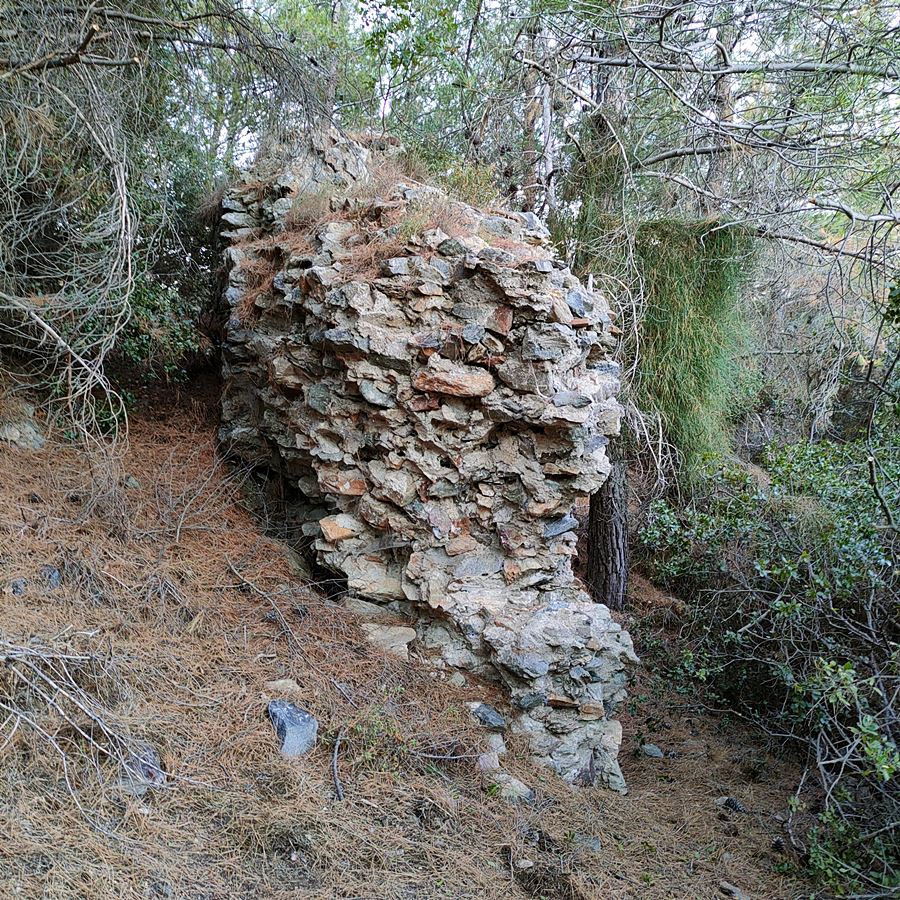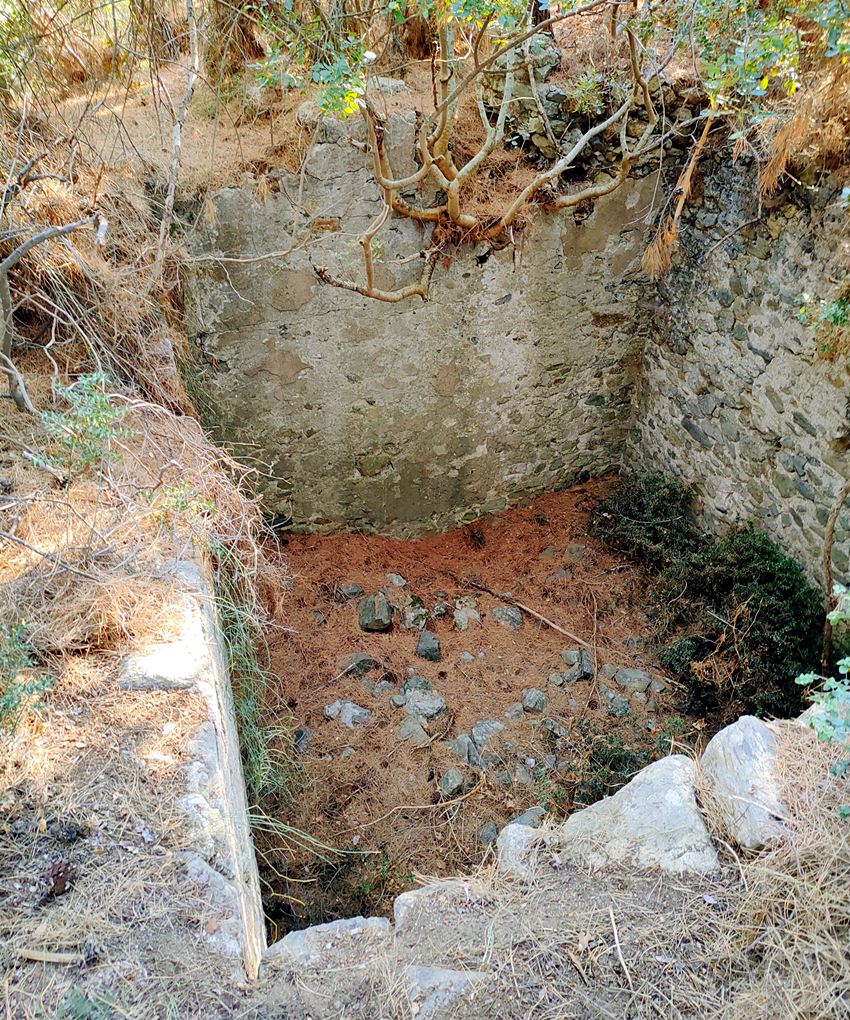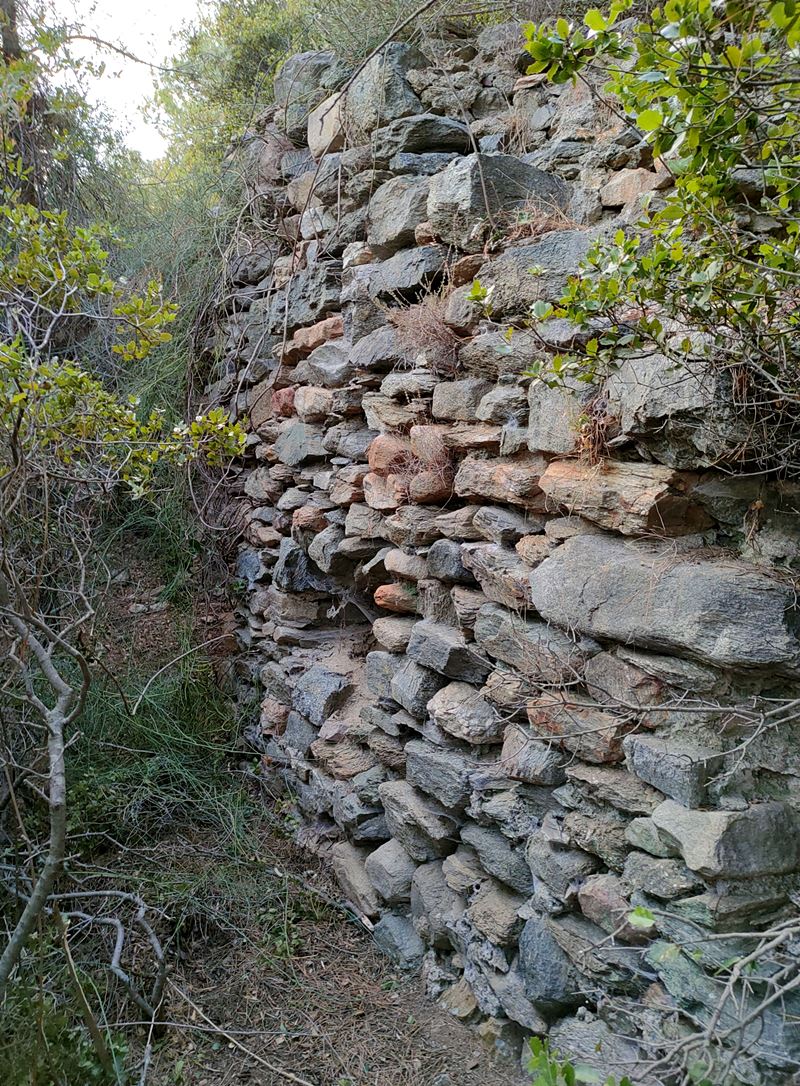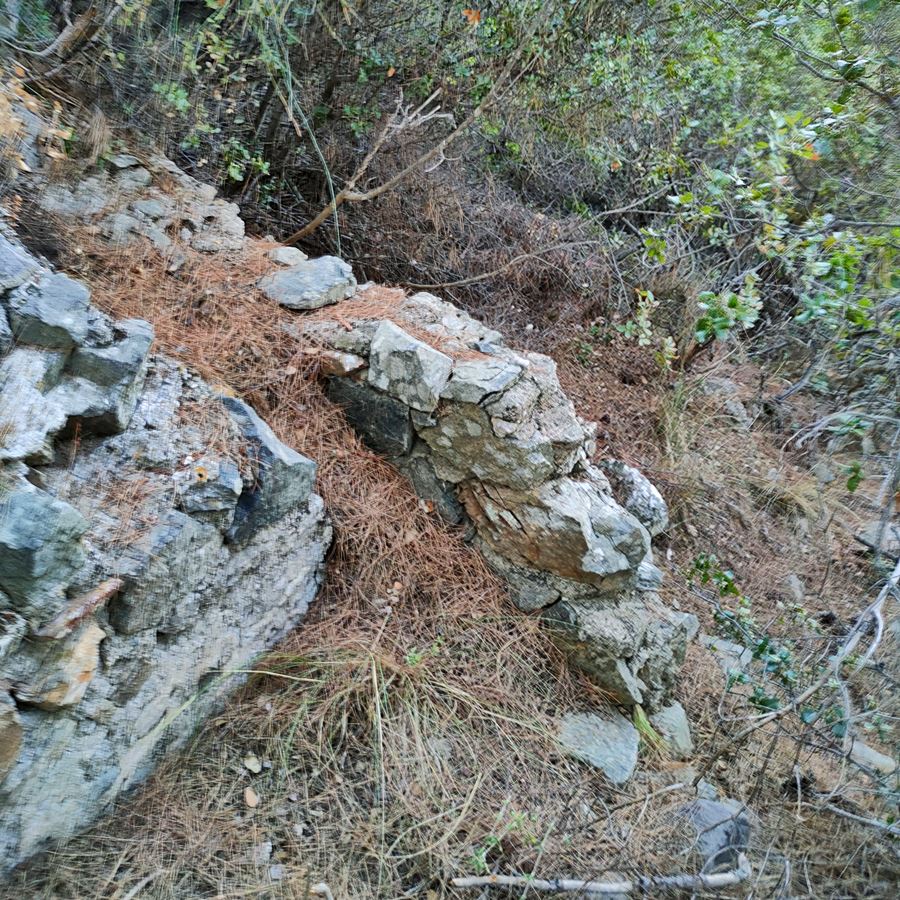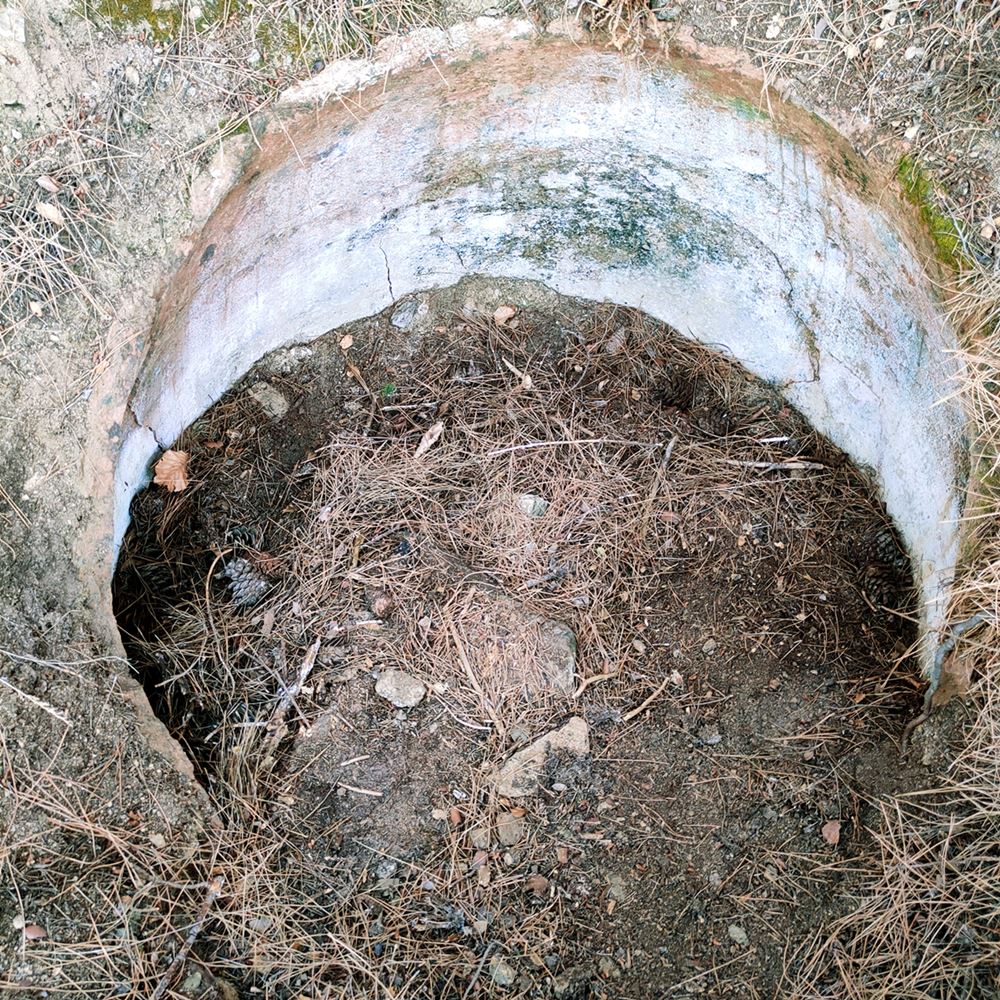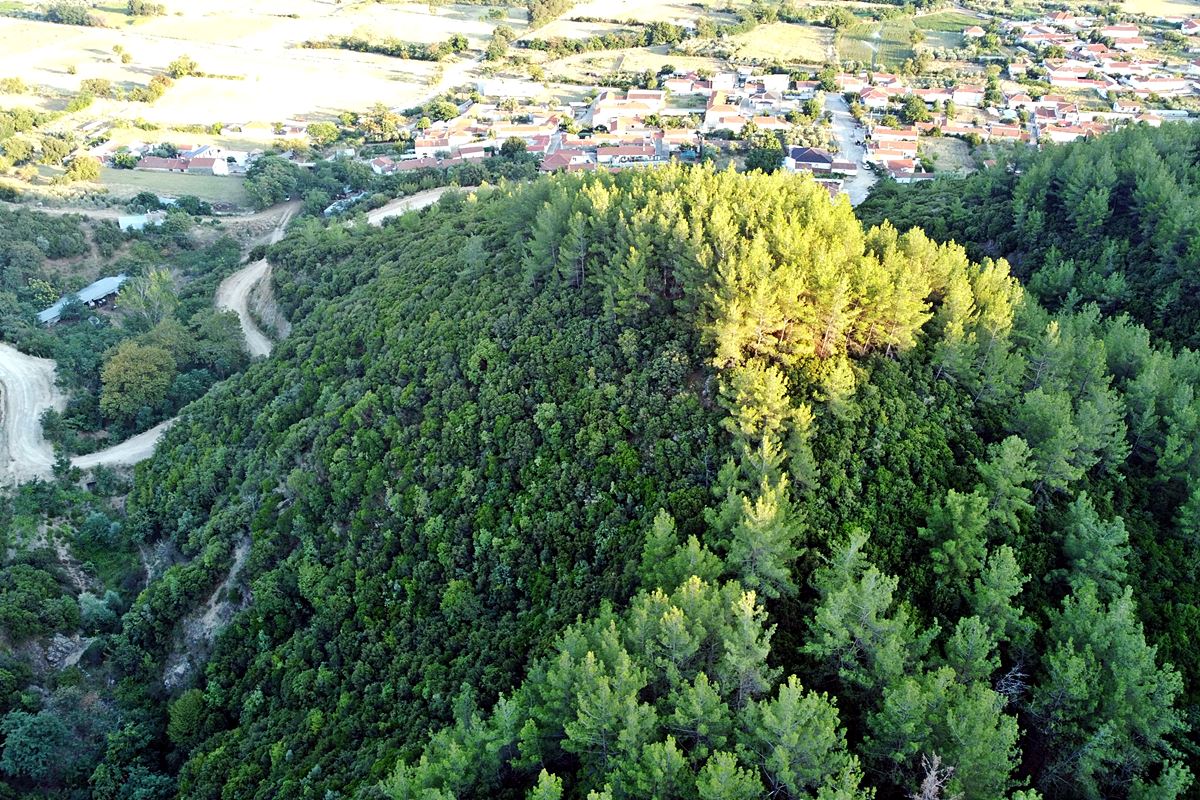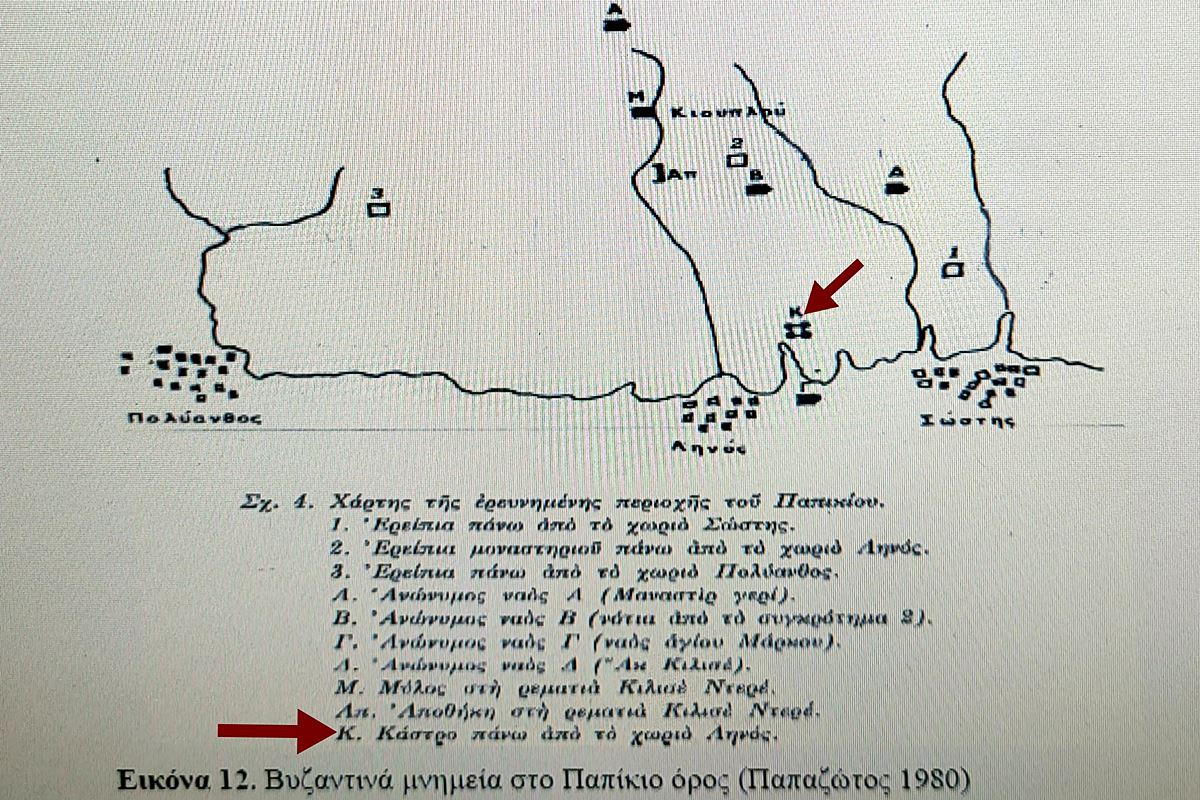Linos, Iasmos, Rhodope,East Macedonia & Thrace
Castle of Linos
| Location: |
| On a pine-covered hill above the village of Linos in the prefecture of Rhodope |
| Region > Prefecture: | 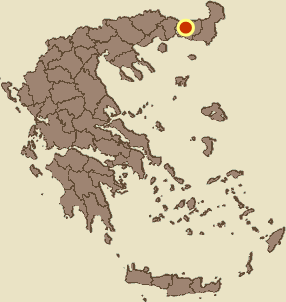 |
| East Macedonia & Thrace Rhodope | |
| Municipality > Town: | |
| City of Iasmos • Linos | |
| Altitude: | |
|
Elevation ≈ 120 m (Relative Height≈50 m) |
| Time of Construction | Origin | |
| Unknown | BYZANTINE |
|
| Castle Type | Condition | |
| Castle |
In Ruins
|
A hidden Byzantine fort on a pine-covered hill north of the village of Linos in the prefecture of Rhodope and above the Iasmos - Komotini up-country road. There was also a settlement on the southern slope of the hill.
Location & Strategic Scope
The hill that oversees a large part of the plain of Komotini, is located above the old Egnatia road that passed very close to the hill, perhaps even directly below it. Also, the castle has visual contact with two very important Byzantine castle-states of Thrace: with Anastasioupolis which is 15 km to the southwest and with Mosynopolis (or Maximianoupolis) which is 5 km to the east. Very close to it, towards the west, on the river Kompsatos, there is another Byzantine castle, the castle of Polyanthos.
In general, the castle of Linos was located in a crowded area, which, among other things, was the theater of military operations, invasions and raids throughout the Byzantine period. However, it may not have been a military fortress, but simply a settlement protected by a small citadel.
Another feature of the location is that the hill is at the foot of Mount Papikion. In Papikion existed one of the most important monastic centers of Byzantium developed from the 11th-12th to the 14th centuries. That is why there are many ruins of church and monastic buildings in the semi-mountainous area at the southern foot of Mount Papikion (see photo 10). We point out this proximity without being able to know whether it is related to the presence of this particular castle.
History
The castle is considered Byzantine but no further information is available. It has not been identified with any castle from historical sources and we do not know its medieval name neither its history. The construction features of the castle are not very helpful in a reliable dating.
A possible (but by no means certain) period of construction is the 12th century, when the monastic community of Mount Papikion was in full bloom. A detail that perhaps connects the castle of Linos with the period of development of Papikion is that in the ruins of the monastic complexes of Linos and Sostis, unusually large cisterns were also found there, as in the castle of Linos.
Another weak clue is something mentioned by Ioannis Kantakouzinos in his historical work “Historiai”: In 1344, during the second Byzantine civil war of the 14th century, Mattheos Kantakouzinos captured Koumoutzina (Komotini) on behalf of his father and they were surrendered to to him the nearby fortresses of Kranovunion, Paradimo, Asomatos and Stylarion. We do not know if the castle of Linos – which is 10 kilometers from Komotini – is one of them.
These are all mere assumptions. In conclusion, we have no idea when the castle was built and for how long it was used.
Structure, Fortification & Buildings
The castle has a rectangular layout with dimensions of approximately 60✖30 meters.
Few parts of the wall are preserved at a satisfactory height. Most of the fortification has fallen into the steep slopes and has been covered by the thick vegetation. However, the trace of the outline of the fortification is visible to the persistent observer.
The wall is made of small and large stones with binding mortar between them. On the south side there is the best preserved part of the wall with a height of about 3 meters and a thickness of 1.80 meters (photos 1,2).
On the western side there is a section of wall with a height of about 2.5 meters (photo 4). On the other two sides, mostly just foundations are visible in some places.
No gate or tower was found in the fortification. The most impressive element of the castle is a large underground water-tank (cistern) in the northwestern part, with dimensions of 4.70✖5.10 meters (photo 3). The internal sealing coating of the tank is still visible in several places. Its depth is unusual, about 4.5 meters, and it must have been actually even deeper, as the bottom is littered with dirt and dry branches.
Another notable find is a section of a large ceramic jar embedded in the ground. (photo 7 - it seems that was its original position.)
Outside the wall, on the southern slope of the hill there are many stone piles and ruins of buildings at a low height. Their construction is stonework using mortar as a binding material. It is clear that there was a settlement here.
As far as we know, no archaeological research has ever been done in the castle. In the meantime, systematic tree planting has been done on the hill in the past. The pine trees have largely covered the ruins of the castle, which are not visible from afar.
| First entry in Kastrologos: | August 2022 |
Sources
- Research, photos and info by Sakis Amfiteides and his blog ΑΜΦΙΤΡΕΙΔΗΣ (2022)
- Website ΘΡΑΚΙΚΟΣ ΗΛΕΚΤΡΟΝΙΚΟΣ ΘΗΣΑΥΡΟΣ - Ληνός (βυζαντινή εποχή)
|
|
| Access |
|---|
| Approach to the monument: |
| At the foot of the hill there is a forest road where we leave the car. We continue with an uphill hike in a northerly direction. The distance is short, but access is difficult due to dense vegetation, while there is no path. |
| Entrance: |
| Free acces |
| Other castles around |
|---|
| Wall of Anastasioupolis |
| Komotini Walls |
| Tower of Molyvoti |
| Mosynopolis |
| Fortress of Nymfea |
| Castle of Peritheorio |
| Castle of Polyantho |
| Castle of Poroi |
| Castle of Thamna |



